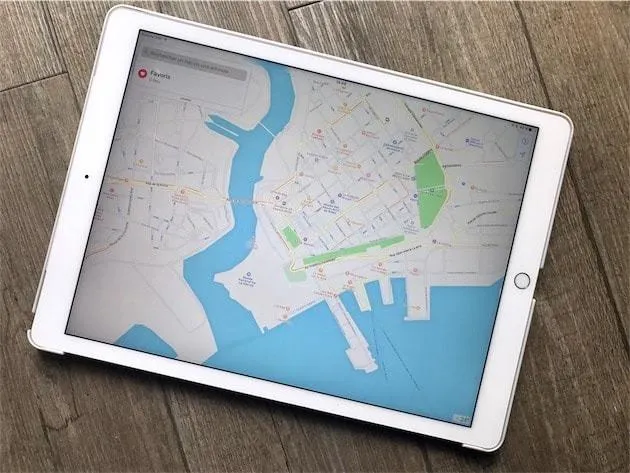2-SECOND BURSTS
SHORT THOUGHTS ON LEADERSHIP, DECISION-MAKING, FLIGHT, AND OTHER TOPICS OF THE DAY
ARTICLES

Modernizing Backwards
Many years ago, I was commanding a fighter squadron deployed to Afghanistan. Among many of the units we were tasked to support was a Marine Expeditionary Force in the Helmand River Province in South-central Afghanistan. The 'city' of Helmand is a sprawling mass of dirt huts, courtyards, mini-farms, markets and commercial shops that look very similar street to street from either the ground or the air. In their ingenuity, the Marines had developed a grid reference system that named every building, every street, and broke the entire area down into 1:50,000 scale maps for planning and execution purposes. These were fantastic for ground troops to stay on the same sheet of music as they cleared areas, fought a persistent enemy that moved from one building to another to elude the Marine forces.
From the air, the maps were a great idea, one that we all employed across the country. The problem, especially for an area like Helmand, was the sheer volume of maps required. On any given mission, as pilots we would bounce from one zone of the city to another, requiring us to theoretically carry more maps than fuel to use all of the reference graphics the ground teams used. Our solution--stolen from the Marine pilots--was to carry an iPad with all of the charts catalogued and saved for easy use.
Using an iPad was a new (read:unheard of) thing for the Air Force, but I was willing to use it as I saw no other alternative. To gain some perspective and command-level thoughts, I emailed Air Combat Command for their thoughts. They heard all of the soundness of the iPad use, said that it made sense, but then quickly said, "but I would not use them because they are not approved for flight." My response (to myself) was "unless I want to," which is exactly what I did. Mission came first.
My iPad example was not the first experience I'd had with risk aversion and decision paralysis in the Air Force, but it highlights the major flaws that currently exist with our acquisition, sustainment and fielding approaches for the Air Force, and why a 'new' thing is more than old by the time it hits the Air Force market. The reasons why our 'modernization' is a misnomer for simply buying 'newer' old stuff adds up to a couple of major issues across the board--requirements development and tracking, focus on programs instead of capabilities, programmatic risk aversion, and the holy grail of a sustainment plan.
Requirements Development and Tracking. Over and over, an operator can see a problem, identify a simple fix, but then see that fix languish in the requirements process. In an effort to be good stewards of taxpayer funds, a requirement mafia protects the list and ensures the larger programs suck all of the life out of the requirements rooms. Paper cut requirements have no home, and result in the death of great ideas by warfighters and contractors alike. Solutions that would then allow the force to move on, fight better for pennies on the dollar. Small is not sexy, thus ignored.
Focus on programs instead of capabilities. A program I'm very familiar with years ago had a contractor approach the program office and offer to upgrade their work to save the government later at no cost. This change would have saved literally $millions in direct costs and labor, not to mention improve lethality of the platform. The program office said 'no', told the contractor to stick to the prescribed program. Often, as a modernization effort is under way, the contractor or the end-user find a program altering change that would enhance the utility of the system, only to be told to 'stick with the program.'
Programmatic risk aversion. Anyone involved in weapons system development has heard the term "buying down risk". Often, however, buying down risk means dispensing of things that may be hard, prolonging the developmental timeline for further testing, and ultimately a delay in the fielding of the equipment that was identified as a need a decade ago. "Fail fast, field faster" is an unacceptable approach in DoD acquisition. Sure, DARPA and other organizations think that way in part, but even putting a known requirement in a lane that is solely developmental is an example of buying down risk and further delays.
The Holy Grail of a sustainment plan. Sustainment, parts management, repairs, and storage are all part of ownership of a system. Too often, however, we stop a requirement fielding in its tracks solely because of a lack of a defined sustainment plan. By not knowing how you are going to pay for the baby's college, we fail to have kids at all. Sometimes, the requirements sitting in front of you produces the best solution. Sustainment is no different. An example of a focus on sustainment is the F-35 program. Part of the buy was based on this elaborate way of sustainment--all of which has been a massive failure.
Each of these and other issues cause the DoD to routinely field equipment that is late to need, not modern, just not as old as what it is replacing.

CONTACT DEREK!

MEDIA INQUIRIES
Members of the press are welcome to contact us regarding any requests at [email protected] ;
(385) 777-6285

